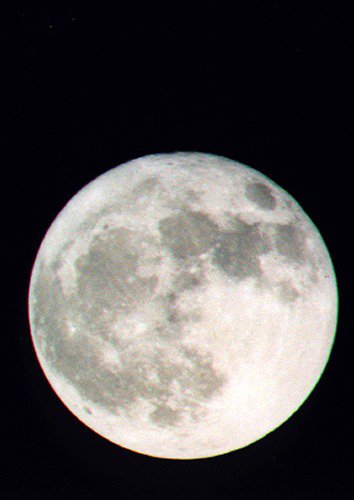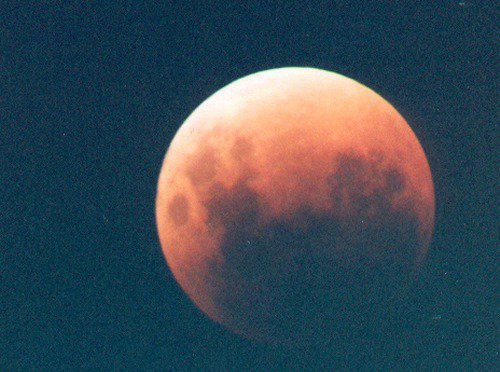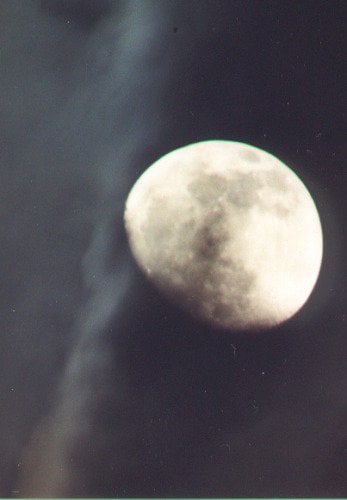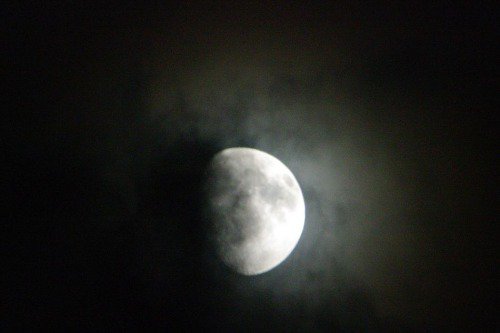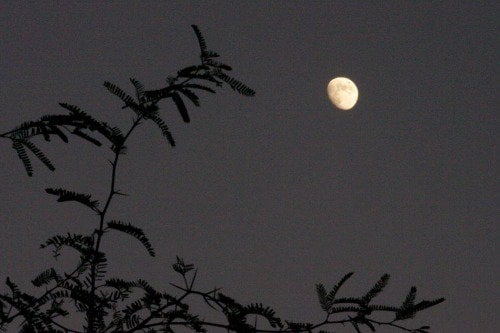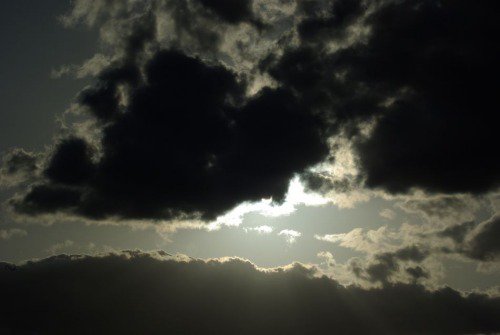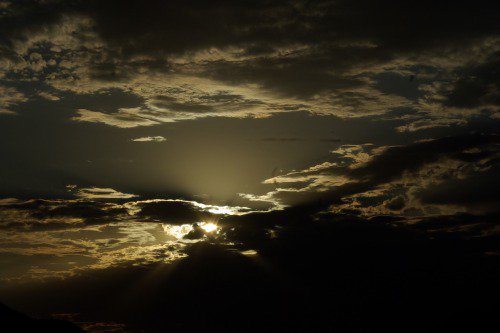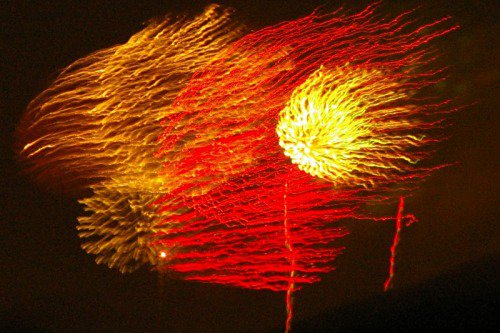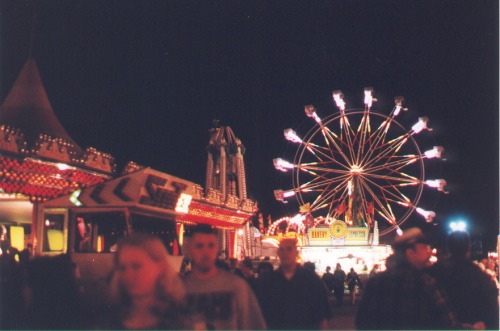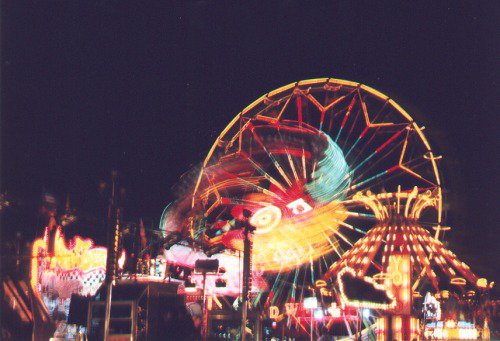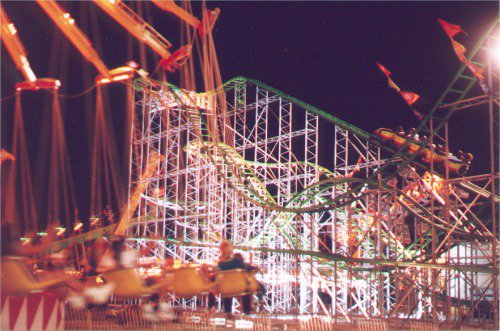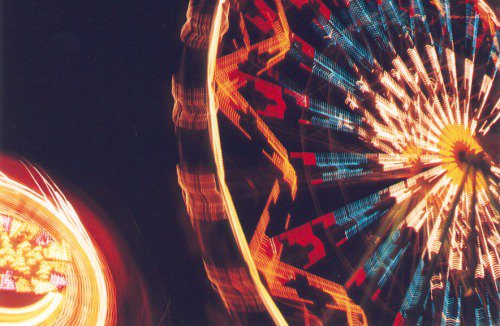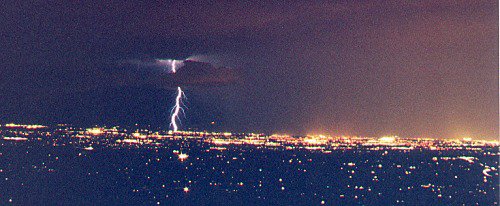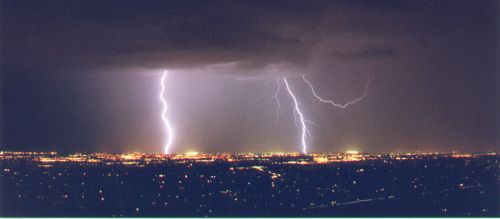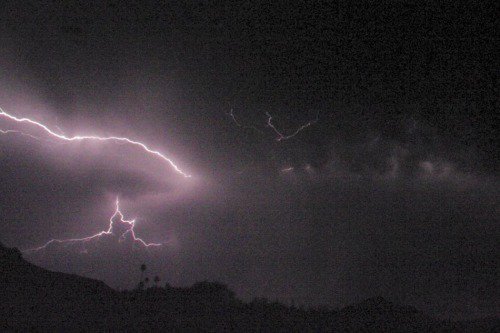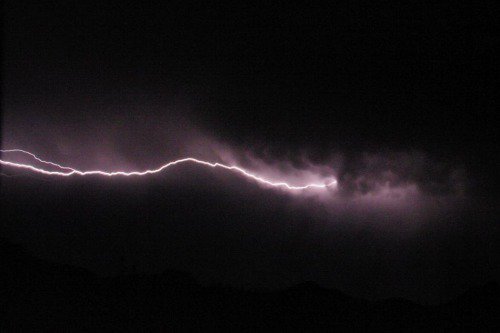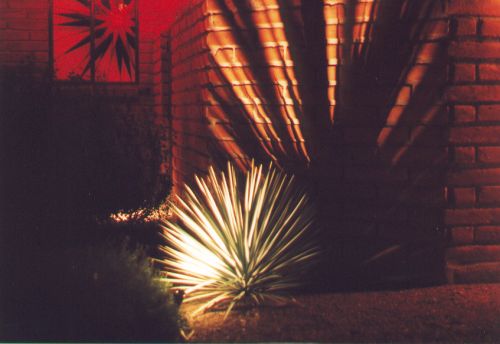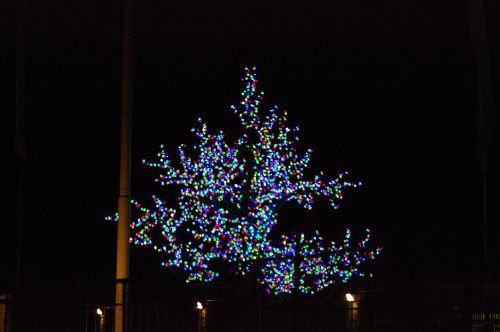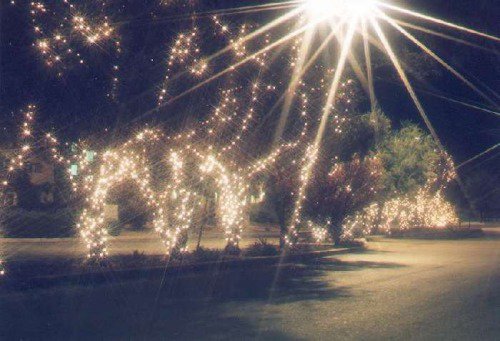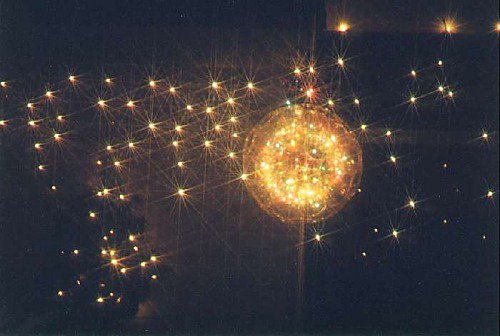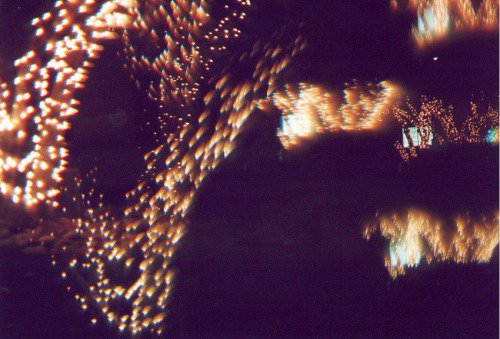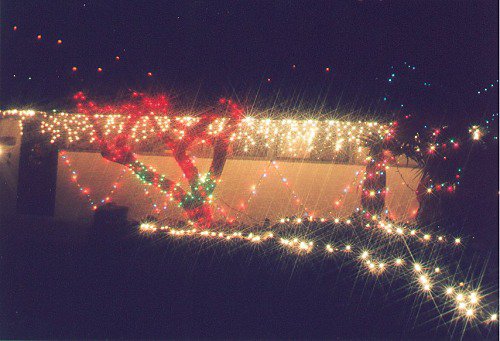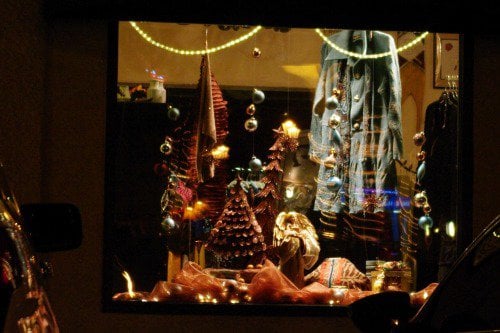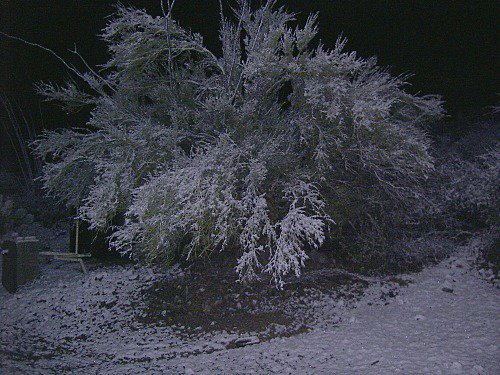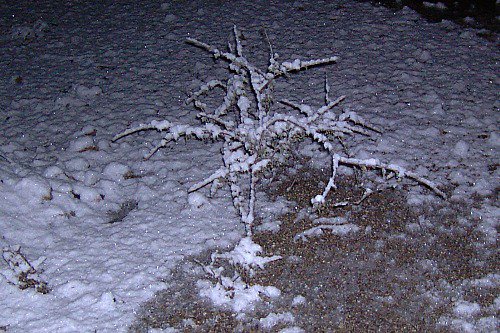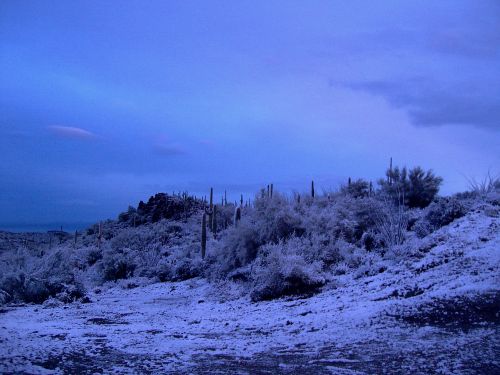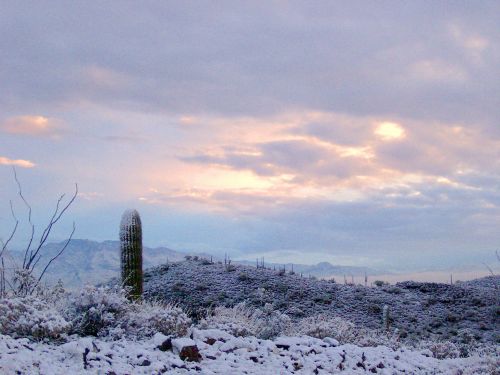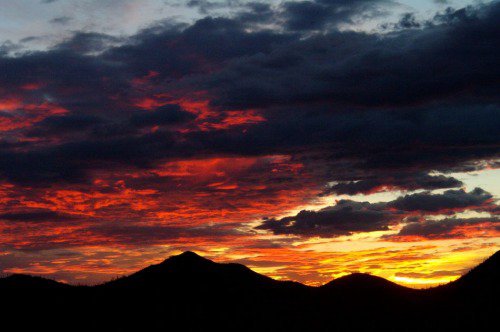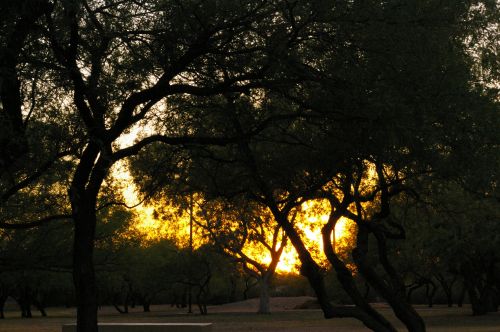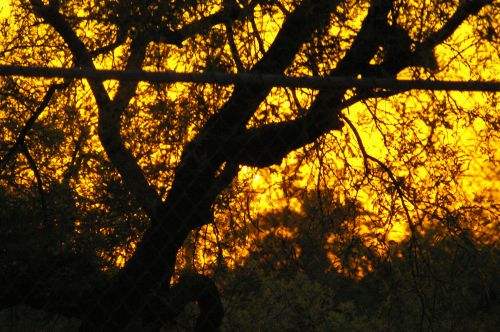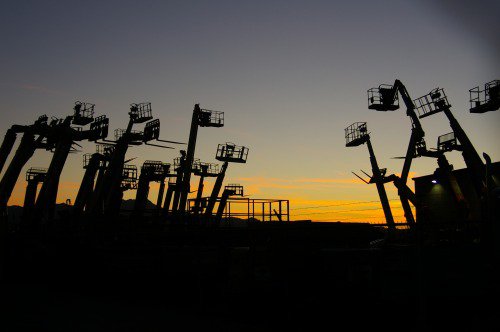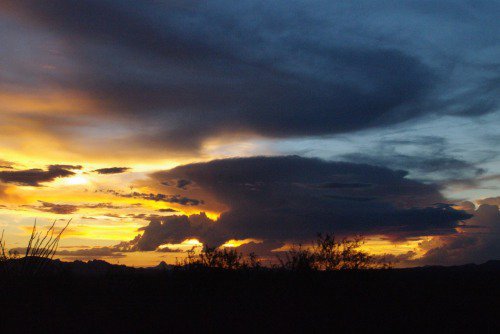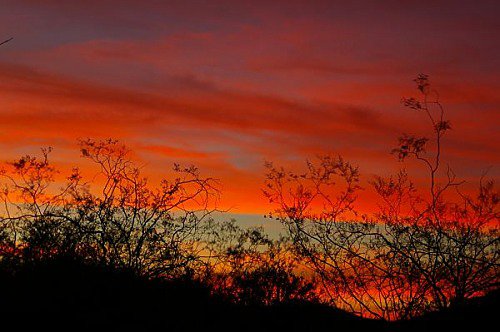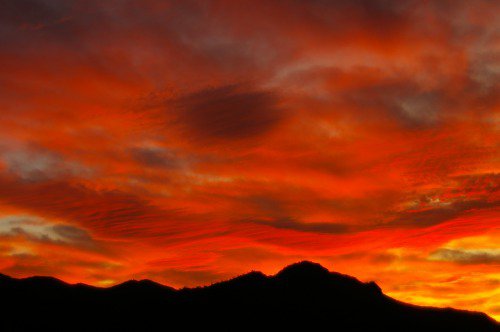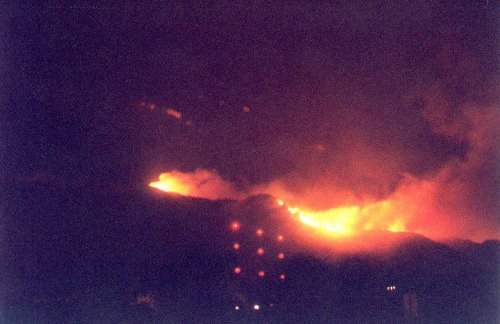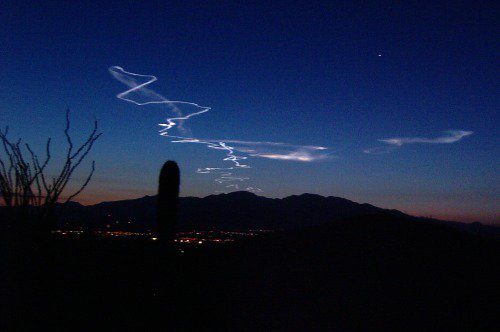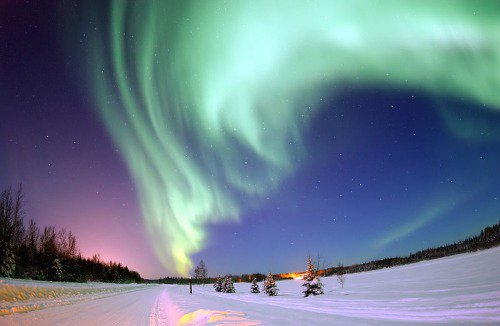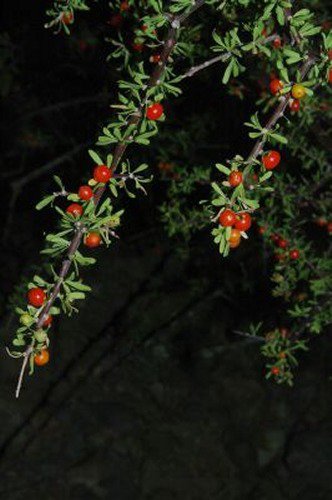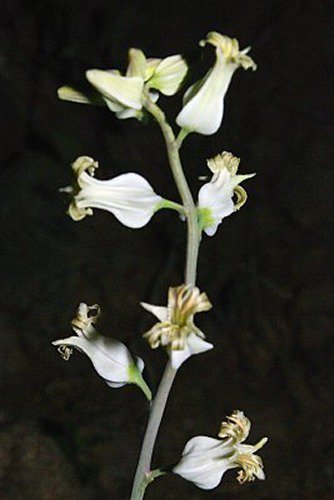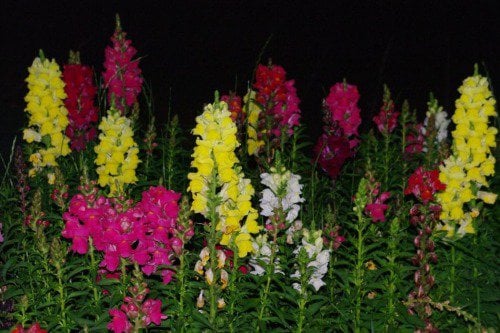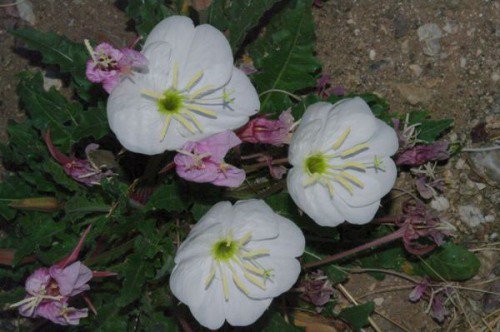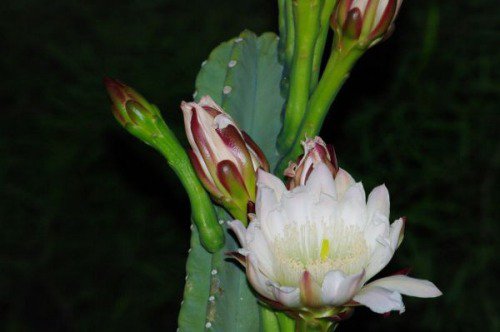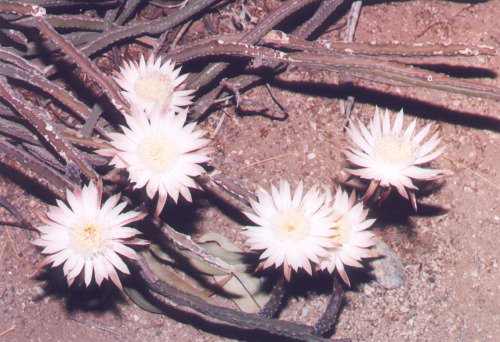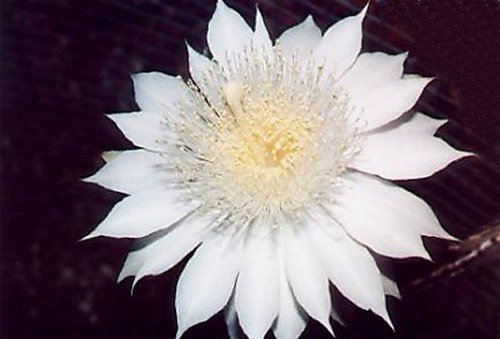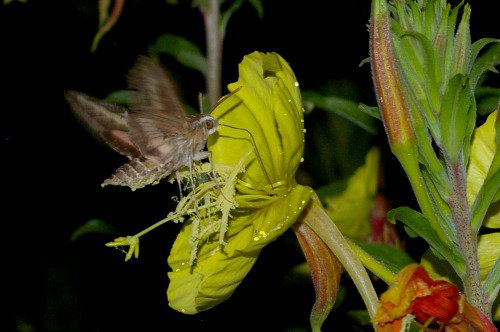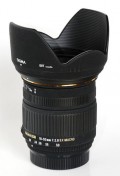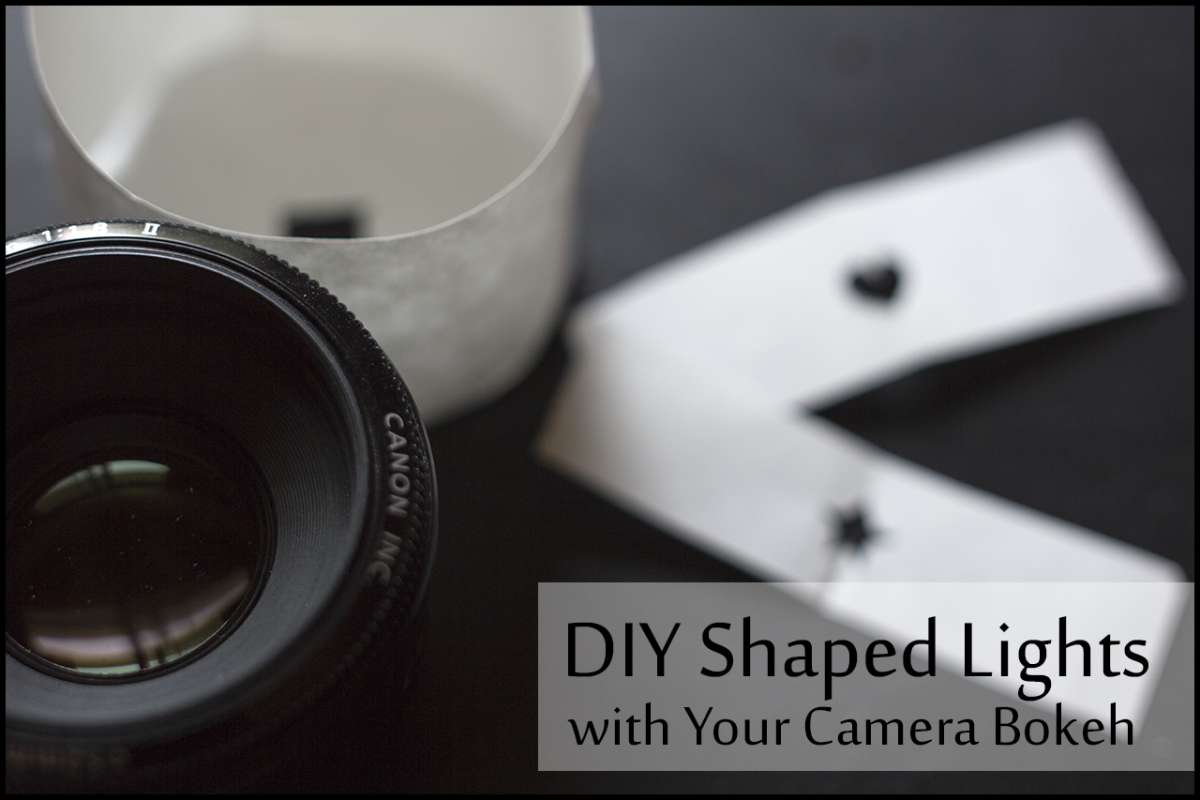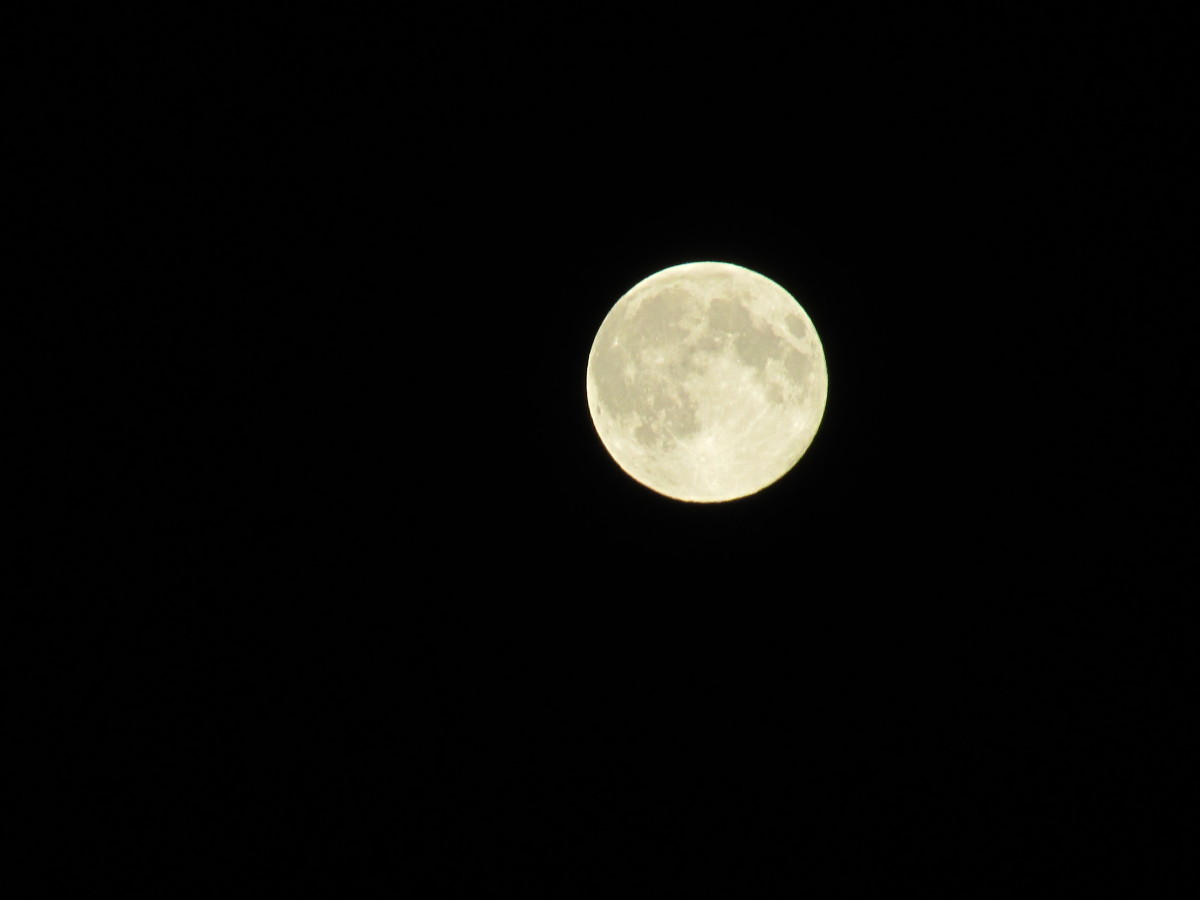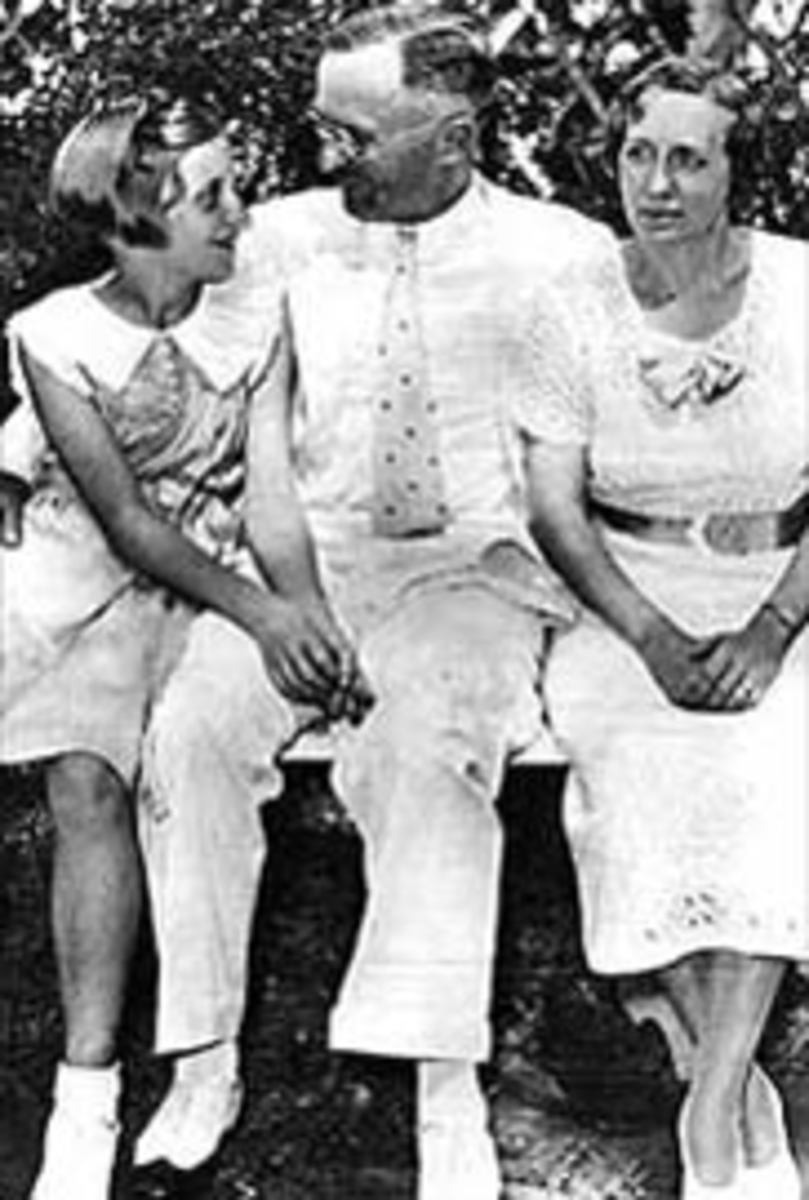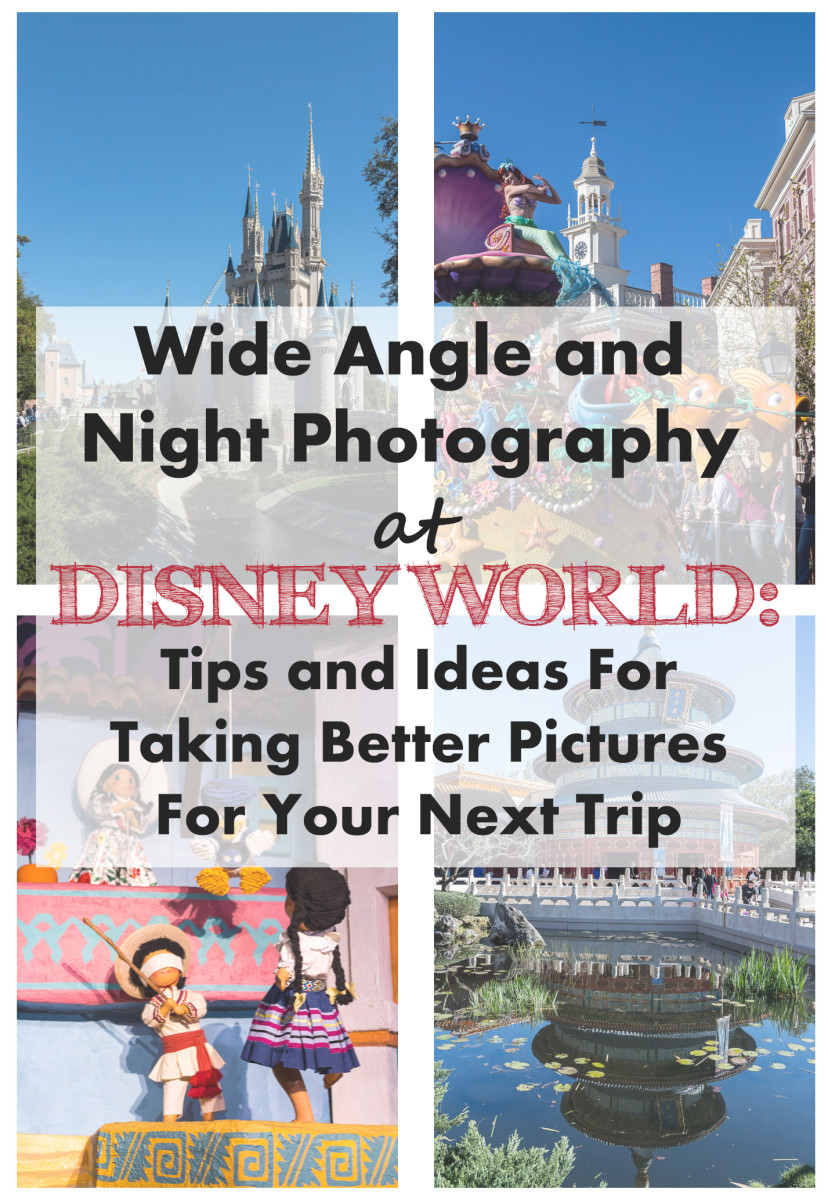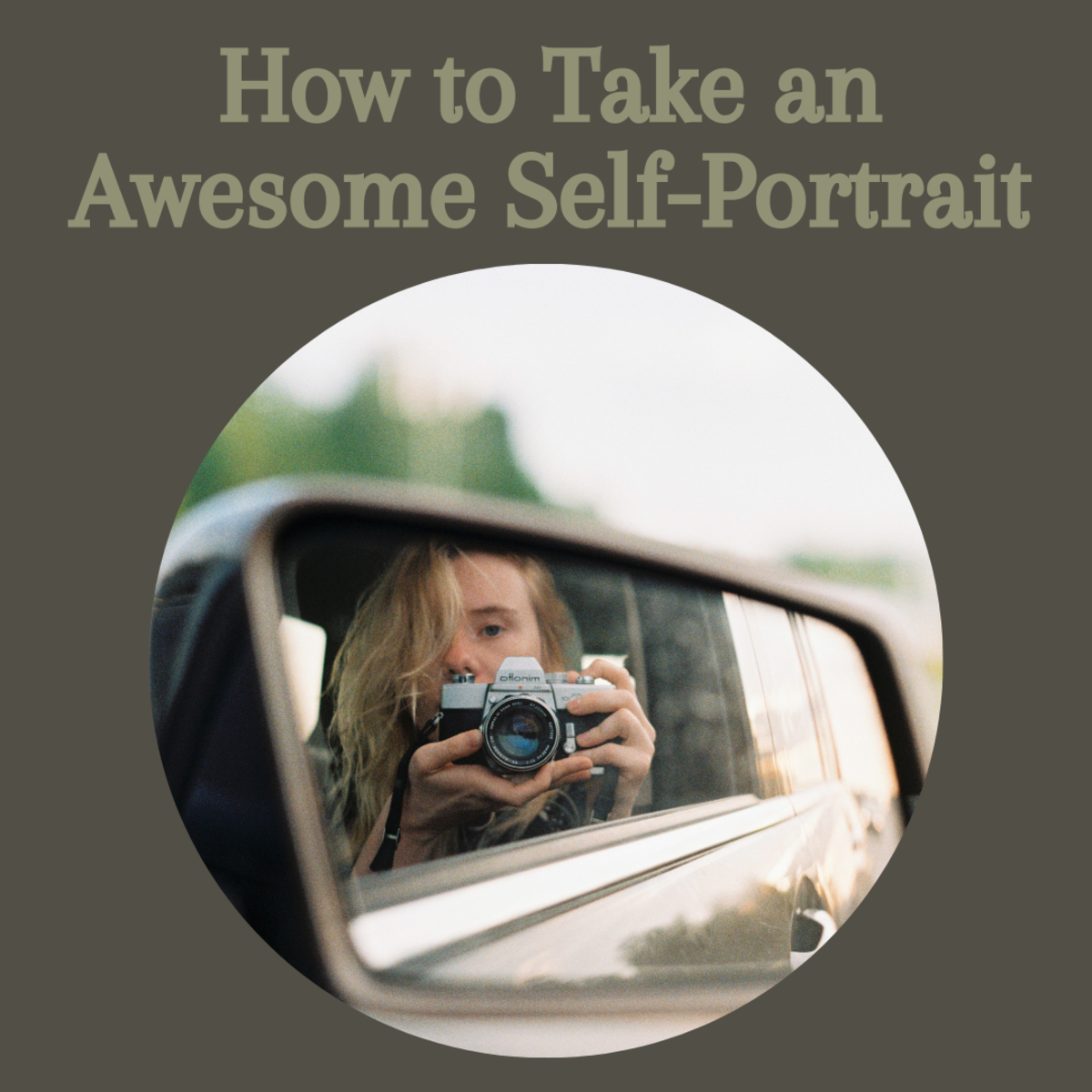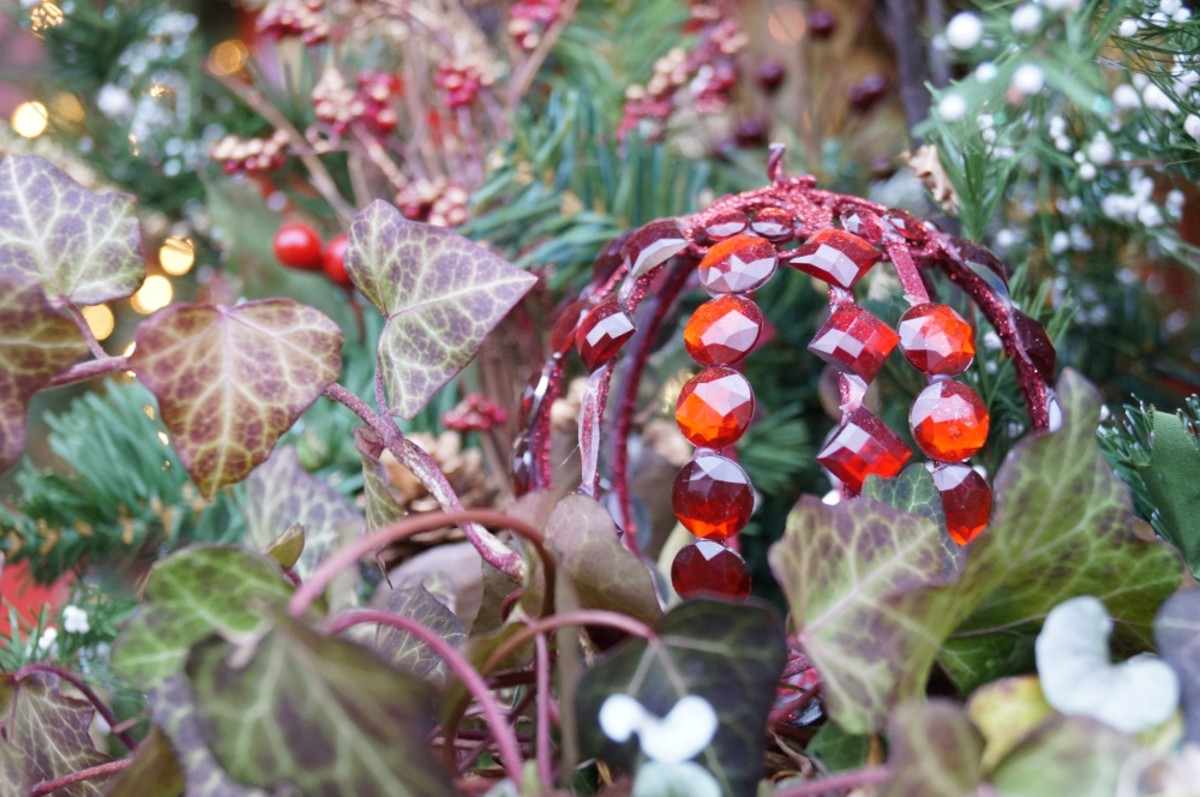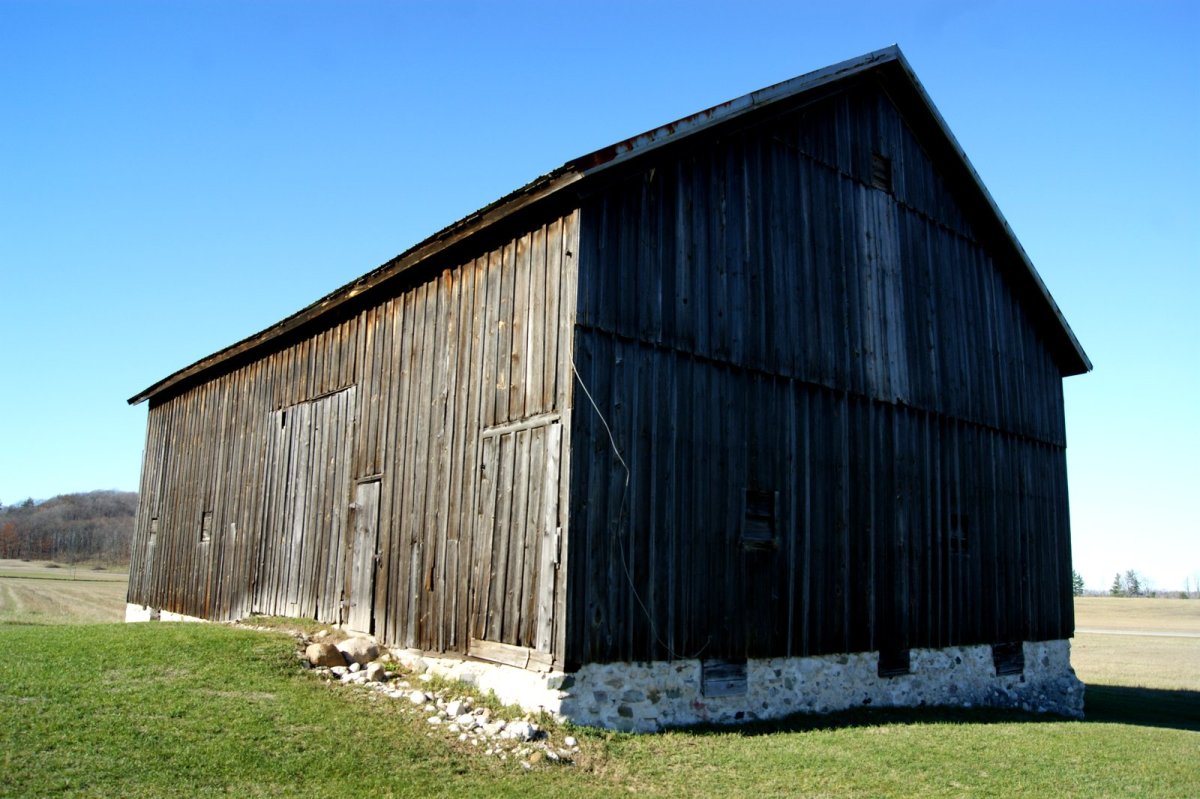Night Photography

Not Necessarily Intuitive
Night photography seems to require a totally different set of skills from daytime photography. In this lens, I will offer ideas and thoughts about how to take pictures at night. Sometimes the exposure needed is quite different from what you might imagine.
I like to take pictures at night of lightning, fireworks, Christmas decorations, and the moon. I have developed a few hints I will pass on to you, about how to do this.
All photos mine, unless otherwise noted.
The Moon
I sometimes take pictures of the moon at night, and sometimes during the day. Getting the right exposure is a bit of a trick. You want the features of the moon to show up, but if you allow the camera to choose the exposure, it will all be white. This is because the exposure meter in the camera simply doesn't calculate it right.
I learned this trick from a man who sells telescopes. He said, underexpose the photo by a stop or two. This works for night photos of the moon (but not an eclipse). I take some of my photos with a 600mm mirror lens (think of a mirror telescope, and you have the very, very same idea). I put an extender on it, so that effectively, it had a focal length of 1000mm. This causes the moon to fill most of the picture. The lens has a little bit of history. It belonged to a friend of ours, but he didn't have a camera for it, so he sold it to me for $35. The owner of the used camera store said it was worth ten times that much. I have used that lens to take excellent pictures of butterflies, but I rarely use it anymore. Because it is a mirror and you can't stop down the aperture, the depth of field is poor. Bright spots in the bokeh look like white donuts.
The best times to take moon photos at night are at full moon, or shortly after or before. You will get better shadows slightly before or after, though I actually prefer to shoot on the night of the full moon.
I use a tripod because of the distance involved, and the fact that it is such a telephoto shot. But you'd be surprised that my best exposure time was 1/60 of a second. I actually did the full moon shot on film. That's really too slow for hand holding, even though ordinarily, it might be perfectly fine for most shots.
In the collection below, I present the following moon shots:
Full moon at night
Nearly complete eclipse (couldn't get that one sharply focused to save my soul)
Moon with clouds (a tricky assignment and lots of fun; some pictures taken on July 4, when the moon and clouds distracted me from the fireworks)
Moon Shots at Night
Click thumbnail to view full-size






Fireworks
Ferris Wheels and Roller Coasters
I have tried taking pictures of fireworks from several miles away with a telephoto, but the results aren't nearly as nice as when you are fairly close. One year I set up less than a mile away, and that's when I got my best pictures. The last July 4th, there was wind, and it messed up all my pictures by blowing the tripod and camera around. :(
The trick to taking good fireworks shots is to stop your lens all the way down, and then leave the shutter open for 30 seconds. This also applies to lightning shots.
I have more fireworks shots someplace, but I have to find them first.
As long as we're talking about man-made stuff which is good for night photography, I might as well throw in a few shots of rides at the fair.
Fireworks
Click thumbnail to view full-size




Lightning
Lightning is tricky, because you never know exactly when it is going to strike. So for that reason, I use the same technique as with fireworks, most of the time. I stop down the lens and leave the shutter open for 30 seconds. Most of the time, I don't get a lightning strike. But occasionally I do.
I have also tried just shooting when I see a lightning strike. This works sometimes. If the lightning lasts for a second or more, you'll get at least part of it. If it's shorter, you won't get anything.
I first try to see where the lightning is active. I am fortunate because I have a hilltop where I can set up my tripod and then aim at a place in another mountain range where the lightning is frequent when it's raining there. I also have shot lightning from Babad Do'ag Vista in the Catalina Mountains. That way, I get not only the lightning, but also the city lights.
Some lightning is something we call "sheet lightning". It is inside the cloud, so it just lights up the entire cloud. This works if you have some mountains to form a silhouette in front of it.
One time I was driving madly back into town because I wanted to make it to the store to drop off my film before it closed. I had used up all my film, or so I thought. I didn't know I had an ISO 800 roll still in my pack. And while I was driving, there was a spectacular lighting strike practically overhead. it was so close that it had many, many branches like a tree in winter. But since I wasn't set up and it happened quickly, and I was on the freeway, obviously I didn't get it. And that's the story of the fish that got away.
It wouldn't have mattered if I HAD been set up, probably. I still would have missed it.
If you want to see some wonderful lightning shots, visit Wunderground, the weather web site. They have a lot of them. You can find them in the photos section, or they have a few reports of them as well.
Lightning
Click thumbnail to view full-size




Christmas Lights
I will give you just a few shots here, since I have an entire lens devoted to outdoor nighttime Christmas lights and displays. There isn't any special trick to these, but you might have to take several different exposures to get one that looks right.
You can play with filters that will give special effects, and that's a lot of fun.
You can see my Christmas lights lens here: The Twelve Days of Christmas.
Christmas
Click thumbnail to view full-size






Do you take night pictures?
I take pictures of...
Snow at Night
Believe it or not, taking snow pictures at night or when it's close to dark can be quite interesting. I give you a few examples.
Around here you should take some pictures at night if it's snowing, because by morning, the snow might be all gone.
Night Snow - Catch it before it melts! This IS the desert, after all!
Click thumbnail to view full-size



Sunsets and other stuff
Sunsets are favorites with many people, so I will give you just a few. I also have a lens on sunsets, which you can see here:
Awesome Arizona Sunsets and Sunrises
Forest fire pictures taken at night are much more spectacular than forest fires during the day, unless you are right NEXT to the fire.
The second to last picture has an interesting story behind it. I was in bed one night (it was close to dawn) and my husband came rushing in, and he said, "You have to come see this." I said, "I'm asleep. I don't want to go see anything." And he said, "You have to come see this. There are TWO MOONS in the sky." So I dragged myself out of bed, and went outside, and he was almost right. I watched as the other bright light in the sky began to change. Pretty soon, there was a trail of light that zigged and zagged across the sky. I called a friend I was sure would be up and told her about it, and she took pictures, too.
Even though we live quite a few hundred miles away, we could see the test rocket launch in New Mexico. That's what it was. Since the sun was already up there, it lit the contrail, and that's why we could see it. The zigs and zags were the wind blowing this around, at different elevations.
One thing I have never been able to take a picture of is an aurora. I live too far south. The final photo is one of the best I've seen. It's in the public domain.
Sunsets, etc.
Click thumbnail to view full-size









Flowers and Birds at Night
Sometimes when I am leaving home and I see some interesting wildflowers, but I don't want to stop because I am anxious to get to my destination, I take pictures of them when I get back. And sometimes the flowers are only open at night. To take pictures at night, you have to use flash. These are a few of the pictures I have taken of flowers at night.
It turns out that if you have to, you can take pictures of flowers by flashlight, and it can produce a different and very interesting effect. And you can use the flashlight to focus. The other day, however, I figured out that if I use a certain setting on autofocus, it will fire the flash so that the camera can focus, and then you can take the picture. My Pentax keeps surprising me with features like that!
I have never succeeded in taking a picture of a bird at night, though I have taken pictures at sunset or sunrise. We have Lesser Nighthawks on our property part of the year. They like to sit on the road, and when they do, they look like brown triangular rocks. I keep hoping I'll be lucky and get a picture of one someday, but so far, nope! The other bird I really wanted to get was the Buff-collared Nightjar, which was hanging out on Procter Road near Madera Canyon. He never started to sound off until it was almost totally dark, and there was no way I was going to get a photograph of him. In order to take pictures of birds at night, if they are at all far away, you pretty much need an external flash with a Fresnel lens that will concentrate the light at a distance. Until I can afford that, I am out of luck. I wasn't able to get a decent picture of the Fan-tailed Warbler, either. Someone else who had that set-up got good pictures. Maybe someday. This is a rare bird, so it doesn't even show up every year. I can think of only one year there was one.
As a consolation prize, I was able to hear the Nightjar plainly. His call is very distinctive. And I was the first person who announced there were TWO of them. People said, "Oh, that was just an echo," until some other people reported the same thing. People often doubt my word, unfortunately. I am somewhat of a maverick, so that's partly understandable. Too bad I wasn't set up to record his call. He was quite close part of the time, and the call was very distinct.
And those are the rest of my fish stories.
Flowers
Click thumbnail to view full-size







It's late and will be getting light soon
I hope you enjoyed your night visit, and were perhaps inspired by it.
I apologize for the fact that some pictures are displayed too low for you to see all of it. This happens in certain browsers. Also, I have not agreed to have my photos "protected" from copying. Feel free to do a screen capture if you like one, for your personal collection (not to be used on the web or for commercial purposes). Since everything I am and have is a gift from God, I choose to share.
Buenos noches!

